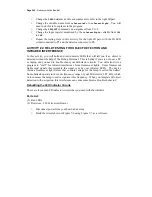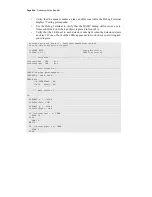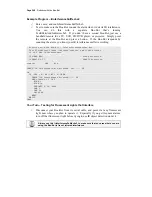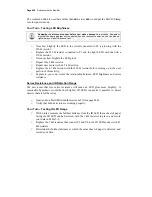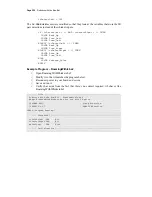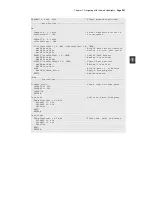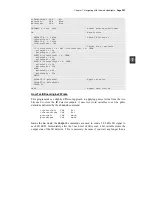
Chapter 7: Navigating with Infrared Headlights
· Page 239
P15
P14
P13
P12
P11
P10
P7
P6
P5
P3
P1
P9
P8
P4
P2
P0
X2
X3
Vdd
Vss
Vin
Board of Education
© 2000-2003
Rev C
Vdd
Black
Red
X4 X5
15 14
13 12
To Servos
+
P15
P14
P11
P13
P12
P9
P8
P4
P2
P0
P10
P7
P6
P5
P3
P1
X2
X3
Vdd
Vss
Vin
Rev B
(916) 624-8333
www.parallax.com
www.stampsinclass.com
To Servos
+
HomeWork Board
Figure 7-5
Wiring
Diagrams for
Infrared
Emitter and
Receiver
Circuits
Board of
Education
(left) and
HomeWork
Board (right).
Testing the IR Pairs Using the FREQOUT Trick
The
FREQOUT
command was designed mainly to synthesize audio tones. The actual range
of the
FREQOUT
command is 1 to 32768 Hz. One interesting phenomenon of digitally
synthesized tones is that they contain signals called harmonics. A harmonic is a higher
frequency tone that’s mixed in with the tone you want to hear. These tones are outside
human abilities to detect sound, which tend to range from 20 Hz to 20 kHz. The
harmonics generated by the
FREQOUT
command start at 32769 Hz and go upward. You
can directly control these harmonics using
Freq1
arguments above 32768. In this
activity, you will use the command
FREQOUT 8, 1, 38500
to send a 38.5 kHz harmonic
that lasts 1 ms to P8. The infrared LED circuit connected to P8 will broadcast this
harmonic. If the infrared light is reflected back to the Boe-Bot by an object in its path,
the infrared detector will send the BASIC Stamp a signal to let it know that the reflected
infrared light was detected.
anode
leads
anode
leads


















